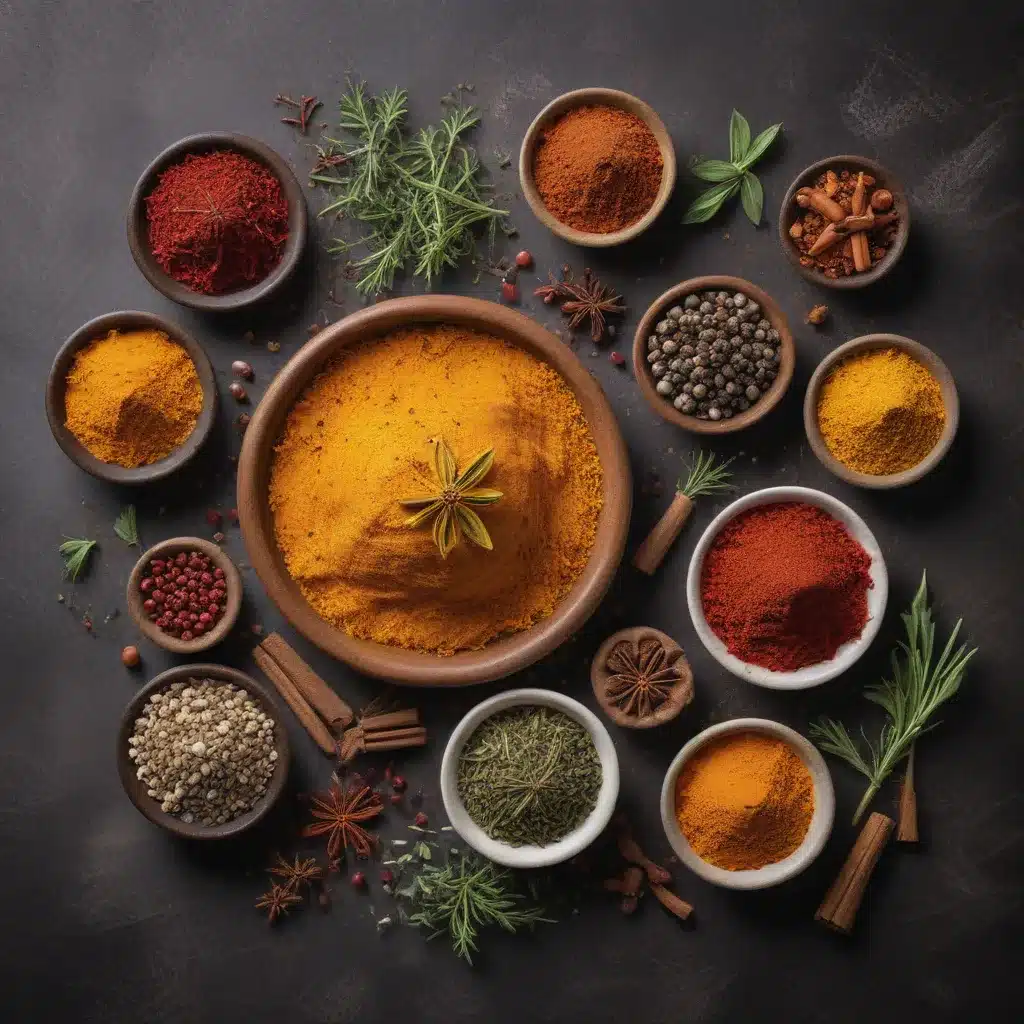
A Flavorful Journey Through Moroccan Cuisine
As I step into the vibrant dining room of El Bahia, the aroma of warm spices and simmering tagines immediately transports me to the bustling markets of Marrakech. This Moroccan restaurant in the heart of New York City has become a haven for those seeking an authentic taste of North African cuisine, and I’m here to uncover the secrets behind their mouthwatering dishes.
Uncovering the Allure of Saffron
The first thing that catches my eye is the gleaming red threads that adorn the menu — saffron, the world’s most coveted spice. Sourced from the delicate stigmas of the Crocus sativus flower, this precious ingredient has long been revered for its ability to impart a distinct floral aroma and a vibrant golden hue to any dish.
As I learn from the head chef, Fatima, saffron’s journey to El Bahia’s kitchen begins in the remote valleys of Morocco’s Atlas Mountains. The labor-intensive harvesting process, where each flower is carefully hand-picked and its stigmas meticulously extracted, contributes to saffron’s hefty price tag. But Fatima assures me that the effort is well worth it, as the flavor and complexity it brings to their signature dishes is unparalleled.
Saffron salt, a unique blend of this precious spice and flaky sea salt, is one of the restaurant’s signature seasonings. Fatima explains that it’s not just sprinkled on top of dishes, but also incorporated into the cooking process, lending a luxurious touch to everything from paella-style rice to slow-simmered tagines.
Spices and Secrets: The Foundation of Moroccan Cuisine
Beyond saffron, the culinary team at El Bahia draws on a vast pantry of aromatic spices to create their signature flavors. Cumin, cinnamon, ginger, and a blend of warm spices known as ras el hanout are just a few of the key ingredients that form the foundation of Moroccan cuisine.
As Fatima guides me through the kitchen, I’m struck by the meticulous attention to detail in each step of the cooking process. She shares the secret to their perfectly fluffy couscous, which involves steaming the tiny semolina pearls over a fragrant broth infused with saffron and a touch of rose water. The result is a light, fluffy base that serves as the canvas for their vibrant tagine dishes.
Speaking of tagines, I’m amazed by the depth of flavor in each bite. Fatima explains that the slow-cooking method, where meats, vegetables, and spices simmer together in the iconic cone-shaped tagine pot, allows the flavors to meld and develop over time. The result is a symphony of textures and aromas that transport you straight to the bustling souks of Marrakech.
Saffron-infused rice is another standout on the menu, with its delicate floral notes and buttery texture. Fatima shares a tip she learned from her Moroccan-Jewish friend, Farah, about soaking the saffron in hot water before adding it to the rice. This simple technique, she says, helps to open up the flavor of the spice and ensures a rich, aromatic result.
Embracing the Beauty of Tradition
As I savor each bite, I can’t help but feel a deep sense of appreciation for the rich cultural heritage that’s woven into every dish. Fatima explains that many of the recipes at El Bahia have been passed down through generations, with each family member adding their own unique touch.
One such dish that exemplifies this tradition is the lamb and prune tagine, a classic Moroccan offering that blends tender meat with sweet, plump prunes and a complex blend of spices. Fatima’s grandmother, she tells me, was the one who perfected this recipe, and it’s now a staple on the restaurant’s menu.
Another standout is the saffron-infused rice, which Fatima serves as a side to many of their dishes. She explains that this vibrant, fragrant rice is a beloved staple in Moroccan cuisine, often gracing the table during special occasions like Rosh Hashanah. The combination of saffron’s floral notes, the rich, buttery texture, and the touch of salt creates a perfect balance that complements the bold flavors of the tagines and couscous dishes.
A Feast for the Senses
As I sit back and savor the final bites of my meal, I’m struck by the way the flavors at El Bahia have ignited all of my senses. The vibrant colors, the aromatic spices, and the satisfying textures all come together to create a truly immersive dining experience.
But what truly sets this Moroccan restaurant apart, I realize, is the way it honors the traditions and techniques of its homeland. From the labor-intensive saffron harvesting to the time-honored tagine-cooking method, every element of the menu reflects a deep respect for the culinary heritage of Morocco.
As I step out into the bustling streets of New York City, a part of me yearns to return to the winding alleys of Marrakech. But for now, I know that I can find a little piece of that vibrant, flavorful world right here at El Bahia, a true oasis of Moroccan cuisine in the heart of the Big Apple.


